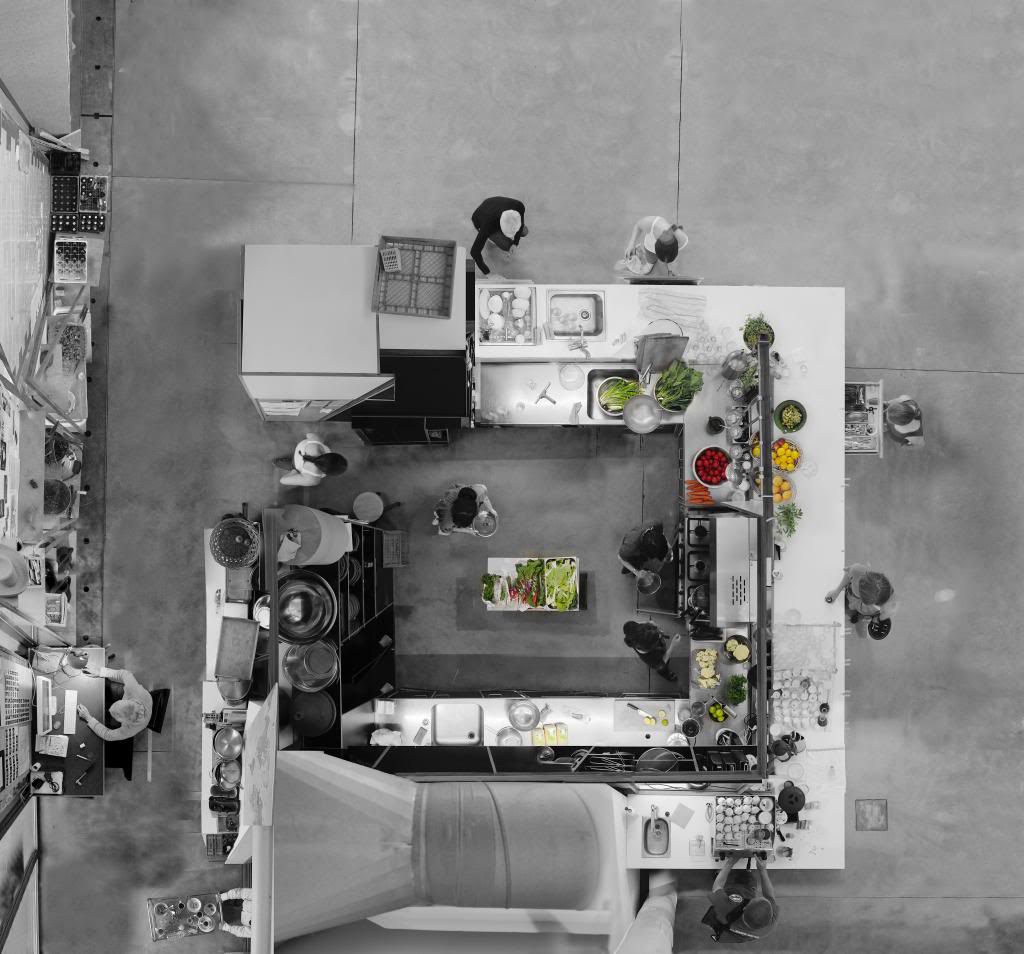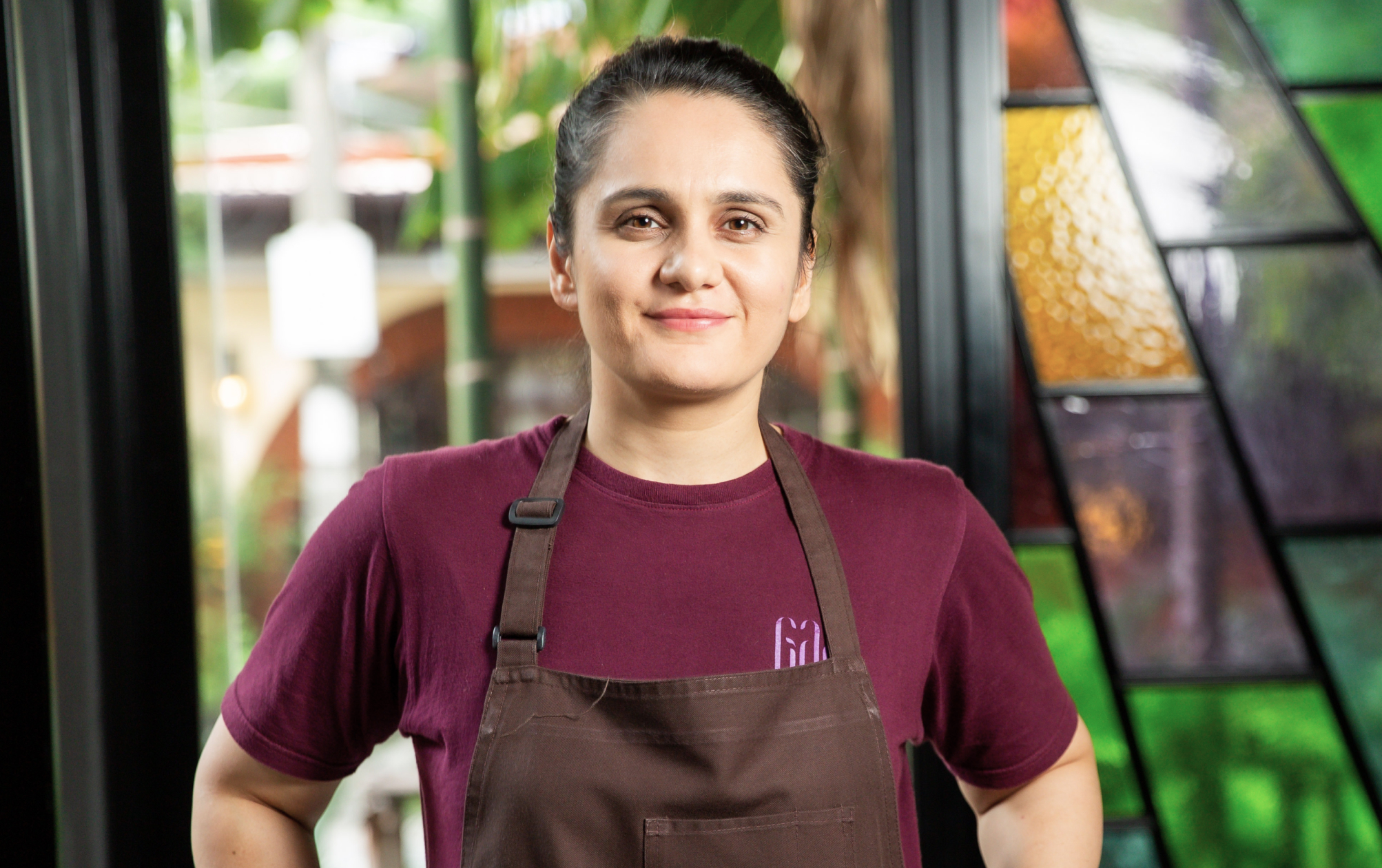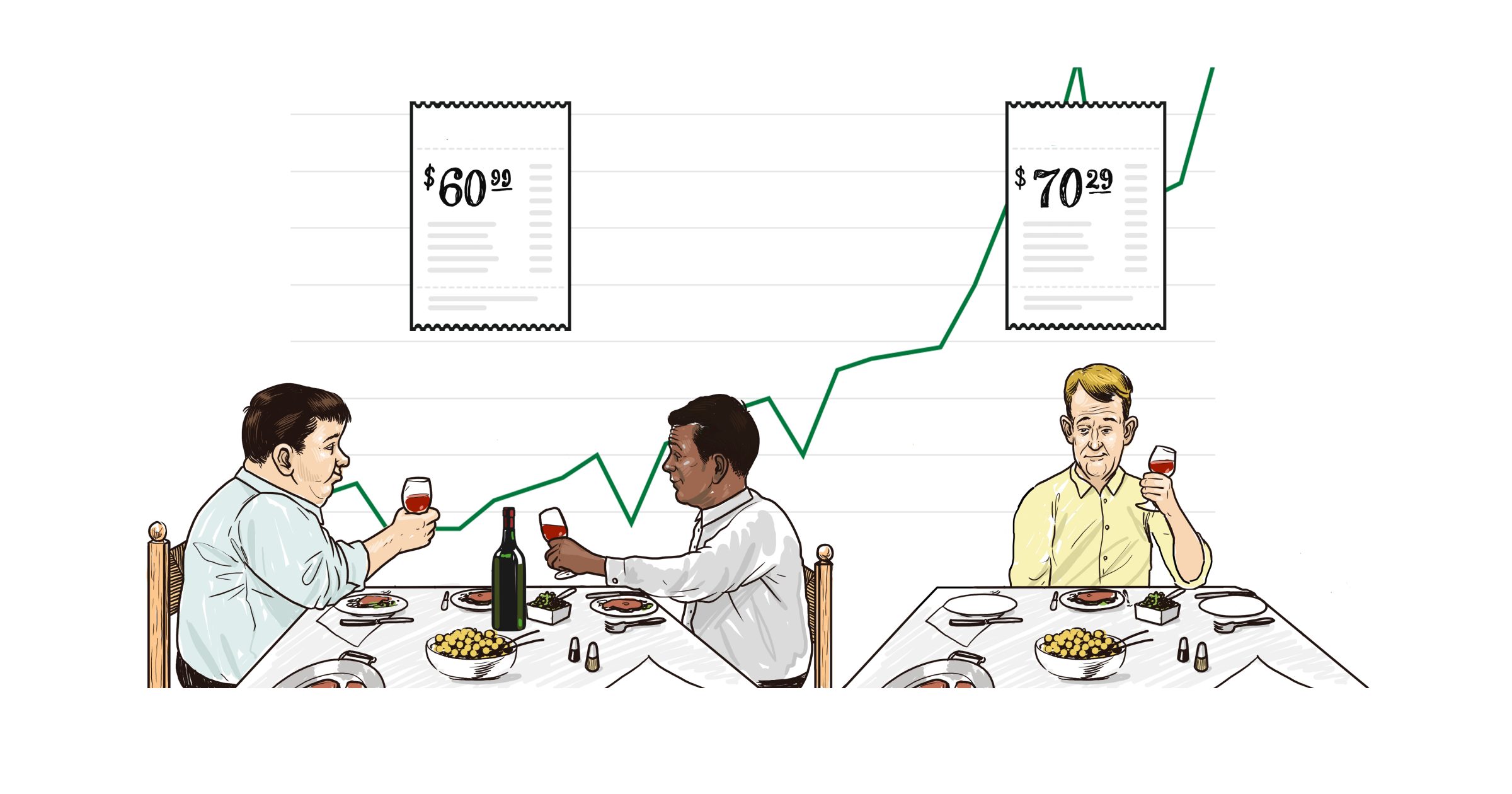The Future of Food is Note by Note Cooking
In recent years, we’ve seen the launch of several products that challenge traditional notions of what cooking and eating are all about. There’s Harvard professor David Edwards’ invention Le Whaf, which lets you inhale the flavors of foods without having to worry about gaining weight; a lab-created hamburger patty that some feel portends a solution to the world’s hunger problems; and, most recently, Soylent, a meal substitute devised by a Silicon Valley software engineer that was the subject of a New Yorker piece titled “The End of Food.”
Another intriguing concept within this realm of future foods is scientist Hervé This’ note by note cooking. One of the leading proponents of molecular gastronomy, This has beendeveloping and promoting a kind of cooking that employs the constituent chemical compounds of ingredients instead of animal or plant tissues. We asked This to explain the ideas behind note by note, and why he thinks it’s the future of food.
What will we eat in 2050? Trust me: whatever it is, we will make it by note à note cooking.
Let me start by explaining a bit about myself and my work. In 1986, I met the late Nicholas Kurti, professor of physics at Oxford University. We came together and realized that we should develop a new science, which we named “molecular and physical gastronomy.” During this process, we discussed how we could also modernize the culinary process by transferring the hardware from the lab to the kitchen. Kurti proposed to move physical hardware to the kitchen, and I proposed transferring chemical hardware. In 1999, a name was finally given to this new way of cooking using new tools: “molecular cooking.” This was done in order to distinguish it clearly from molecular gastronomy.
These two processes sparked quite a bit of confusion with terminology, as you can imagine, and it would be too tedious to examine it here. Let’s only make clear that “gastronomy” does not mean “haute cuisine,” but rather “reasoned knowledge about man’s nourishment.” This is the definition developed by the gastronome Jean-Anthelme Brillat-Savarin, who popularized this word a few years after it was introduced to the language. And let’s observe that the expression “molecular cooking” has nothing to do with molecules; it is only an expression that I proposed in order to distinguish cooking from science, as a science is looking for the mechanisms of phenomena, whereas cooking means producing food. And, as everybody knows, molecular cooking was very successful. This kind of cooking has also been referred to as “techno-emotional” or “modernist.” All of these terms are fundamentally the same. They indicate that molecular cooking is cooking with new tools: with the kinds of devices and resources that were not present in Paul Bocuse’s kitchen in the 1970s.
The provocative idea of note by note cooking: What, chemicals on our plate?
In 1994, I was working on an article for Scientific American and needed a strong conclusion. In the piece, I had shown how some compounds (what lay people often call “chemicals”) could be used in the kitchen (in particular paraethylphenol to give a wonderful earthy flavor to whiskies), and I decided to close with something along the lines of “I dream of the day when recipes will contain instructions like ‘Add to your stock two drops of a 1 ppm of methyl mercaptan.’”
Then, in 1996, I began lecturing about this idea, and introduced the term “note by note cooking” in order to describe an approach to cooking that uses compounds rather than plant or animal tissues. Yes, this is the definition of note by note cooking: making dishes using compounds that can create the same consistency, taste, odor, color, trigeminal sensation as plant or animal tissue.
I must admit that at the beginning of all this, I regarded myself as crazy and provocative. Because I could sense that I was perhaps being provocative for the sake of it—and because the public was resistant to my ideas as we neared the new millennium and the potential Y2K bug—I stopped lecturing on this topic and proposed instead the concept of “culinary constructivism.”
I realized in 2004 that this was a mistake. We should not base our actions on public feelings, but on rational analysis of the information before us. I decided to go back to “note by note” and proposed to my friend Pierre Gagnaire that he be the first chef to serve a note by note dish at a restaurant. This he achieved on the 24th of April 2009, at the Mandarin Oriental in Hong Kong, in front of TV, radio, and newspaper journalists.
I am almost certain that the food produced through note by note cooking will be the food of the future. Gradually, this idea—it’s not an opinion—is spreading and beginning to take root.
Why note by note is the future
Food Agencies are, first and foremost, organizations that care for the well-being of the worlds’ human population, and they are aware that the 10 billion people on the earth by 2050 will be facing an energy and water crisis. How will we feed these people? We barely know how to feed six billion.
Spoilage is a key aspect of this equation, and studies show that much of it could be reduced by extracting water from food products at farms. This new approach would yield several appealing results. First, the products obtained, probably by membrane processes, would be resistant to attack by micro-organisms. Second, these products effectively become a new form of water supply (such plant tissues as tomatoes are up to 85% water), reducing water transport needs in general and constituting an excellent new water source for farms in dry and sunny lands. It’s worth mentioning that the European Commission is already giving funding to the Horizon 2020 Framework Program 8 to work towards the “replacement of animal proteins by plant proteins in the human diet.”
Some might see note by note as signaling a decline in quality or limiting the search for new ingredients. In fact, it’s a great opportunity to develop the art of cooking. Note by note owes its name to its parallel with sound synthesizers, and the evolving art of music offers a suggestive analogy. In musical composition, only engineers start with pure sound waves, making sounds with pitch, timbre, and dynamics. Musicians then assemble the sounds they produce into melodies, and synthesizers are more practical than computers. A music-maker who composes with sound waves, rather than instruments, compares with a cook who composes food with compounds, rather than whole plant and animal products. Note by note cooking will probably evolve in the same way as music, with “pure note by note cooking” distinguished from “practical note by note cooking.”
I will give oil as an example. Oil is a mixture of triglycerides, and it would be useless to separate its constituent parts. Yes, certain cooks would probably gain new and interesting ingredients if some fractionation were made, yielding oils with different melting points, but this is not so important. The same holds for starch, which is made from two polysaccharides, amylose and amylopectine. Maize starch is 85% pure amylopectine, and it would probably be useless to make it purer, although it would be convenient in view of a more precise way of cooking.
The process of making a note by note dish seems difficult and time-consuming to many chefs. When you grill a piece of steak, after all, you just put the animal tissue on the hot pan and cook it, whereas note by note requires you to construct all elements of a dish: odor, taste, color, consistency. But let’s examine the practicalities. In about the same interval that the steak is on the grill, you could combine six spoonfuls of protein (a white powder) with four spoonfuls of water, add colorants, odorant compounds dissolved in oil, and powders for taste, then cook it all as you would an omelette. Yield: the equivalent of animal tissue, 60% protein and 40% water.
We have actually conducted an experiment to compare a traditional red wine sauce, which takes many hours to reach optimum flavor, and a Sauce Wöhler, which I developed to take less than one minute to produce. You just have to boil water, phenolics from red wine grapes, tartaric acid, glucose, salt, piperine, gelatin, and emulsified oil (please remember that an emulsion is not a foam). We liked the note by note one better! To be fair, the phenolics were wonderful, obtained from Syrah grapes with a specific terroir. There should be no reason for note by note cooking to be of low quality.
At the same time, note by note can be time-consuming and even tedious, as evidenced by a recent dish by Pierre Gagnaire, named after the jazz fusion pianist Chick Corea.
My point is that for today’s chefs, and for many of those in the MAD audience who have access to the abundance of plant and animal tissues in western countries, note by note represents a new world of possibilities in terms of flavors, consistencies, colors, tastes, and odors. They are all within reach. A new frontier is before us. Do we want to explore it, or remain timidly in our very old world?
We have 35 years to go, but why miss opportunities for innovation now?
I grant, of course, that there is no hurry. Chefs can still roast a chicken as it was done in the Middle Ages. But this is bad for innovation! For the most advanced chefs, for those who are willing to work, for those who will be explorers of new territories, there is plenty of land to investigate.
Please remember that the food of the future cannot but look different from the food of today, for many reasons. There is a pandemic of obesity, and a great need to design food more suited to our modern lives (which are threatened far more by the easy availability of sugar, fat, and opportunities to rest than the scarcity thereof). And then—well, the list of reasons is too long, so I will simply conclude with the main point.
I may have been invited to write this piece because molecular cooking is or was fashionable, and it is or was fashionable because a strategy was implemented over thirty years ago. This strategy was adopted from Antoine-Augustin Parmentier, who introduced the potato to France in the late 18th century, when the country was starving because of cold climates and low wheat production. At the time, the potato was considered toxic by the French Academy of Medicine. Parmentier had seen the Germans eating it, though and he made many efforts to make it part of the French diet. In order to succeed, he had the king of France eat it, and he advertised this fact.
If the potato was good enough for the king, it was good enough for the people. The spread was immediate and lasting. We applied the same logic to molecular cooking at its origins: if the best chefs would use it and eat it, then the public would want it. Nowadays, siphons are sold by popular shops all over France, and chefs are using circulators, liquid nitrogen, and rotary evaporators.
We are now applying this same strategy to note by note cooking, because, trust me, it is the future of food.
RECIPE for a Note by Note “Steak”
Editor’s note: After receiving This’ submission, we asked if he could provide the recipe for the steak substitute he refers to in the piece. And here it is, untested. If you decide to make it, do let us know how it goes.
Take six spoons of proteins which can coagulate.
Add four spoons of water.
Add two spoons of glucose.
Add colorants.
Add amino acids according to your taste.
Add odorant compounds dissolved in oil (for example, 1-octen-3 for a mushroom or heptanone if you generally like blue cheese).
Pour this dough in thin layers on paper.
Comb it.
Cook in a microwave for some dozens of seconds, until coagulation.
Pile and fold the coagulated and striated sheets into a piece.
Serve with a sauce.
You can purchase a copy of Dispatches via the MAD Store.




